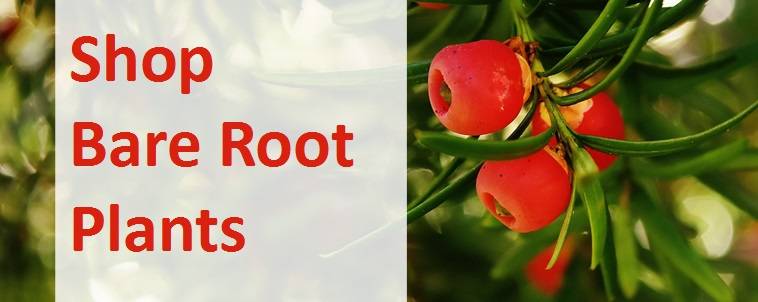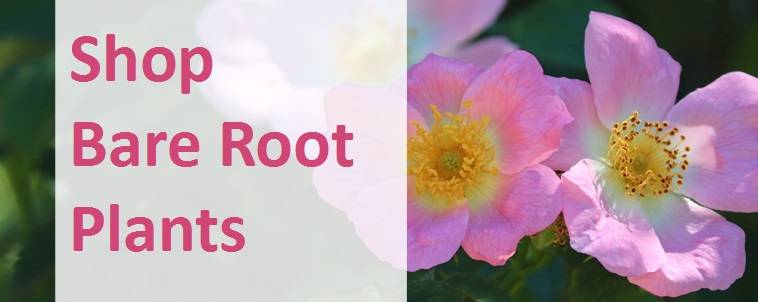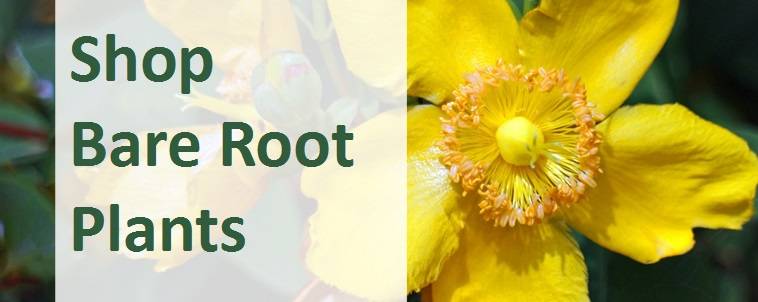Which plants are available to grow as bare root?
This guide runs through the types of plant can be grown as bare root plants during the dormancy period between November and March. Bare root plants are grown in the open ground at the nursery and supplied without any soil around their roots, rather than in plastic pots or containers. A wide variety of plants are available in bare root, often at a fraction of the cost of their containerised counterparts. They could be a great choice, providing you don't mind wrapping up warm and venturing into the garden during the winter to plant them.
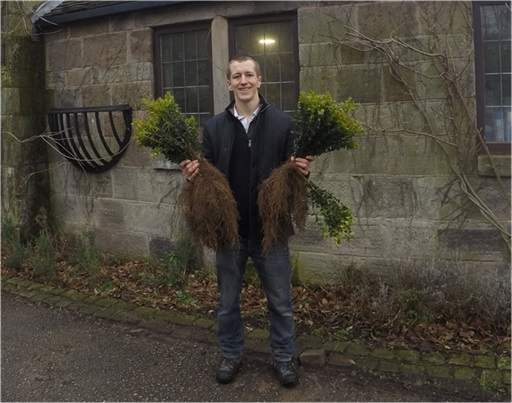
Bare root box plants are a popular choice to delineate different sections of a knot garden
Bare Root Hedging
- Bare root hedging is a very economical and affordable choice, especially if your need to plant a long length of hedging, for example along the border of your garden, or around a knot garden.
- Whilst bare root hedging is not instant (and deciduous varieties will not be in leaf at the time of planting), your plants will quickly knit together over a couple of growing seasons. Before you know it, you'll have an impenetrable screen to keep out unwanted intruders or provide some privacy from any nosey neighbours!
- Popular choices include bare root laurel, beech and hornbeam. Alternatively, an 'edible hedge' made up of blackthorn, wild cherry and rose rugosa makes a beautiful haven for wildlife.
- If you want a native hedge, you'll want to plant a mix of 70% hawthorn, 5% beech, 5% holly, 5% guelder rose, 5% wild rose, 5% hazelnut and 5% sloe berry. See our hedging planting guide for more information.
- Another popular choice is using bare root box plants to create a knot garden. Knot gardens are formal gardens laid out in intricate designs, often with box plants used as low hedging to delineate different parts of the garden.
- Shop for bare root hedging
Bare Root Shrubs
- Many of your favourite garden shrubs are available to buy bare root and are a great way to get more 'bang for your buck' for any given height or size of plant. They'll provide the same array of foliage colours, vibrant stems, stunning flowers, berries, autumnal colour and beautiful fragrances as shrubs grown in containers.
- Shrubs are distinguished from trees due to their multiple stems branching from the base and shorter height.
- Bare root Cornus are ideal for heavy clay soils that are prone to lying wet; Mahonia Aquifolium makes a stunning dense evergreen with clusters of yellow flower panicles in the spring and black autumn fruits; and laurel is a staple that deserves a place in every garden, to name just a few.
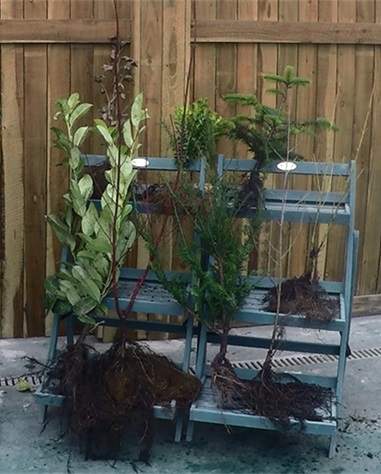
A selection of bare root shrubs brought indoor for a quick demo
- The upper growth of bare root evergreens shrubs will look very much the same as their containerised equivalents. Deciduous varieties will of course not be in leaf at the time they are supplied (November to March) but don't worry that deciduous plants look a little brown and twiggy to start with. Their roots will quietly establish below ground during the winter, ready to fuel a fabulous display of foliage come the spring.
- Bare root yew is a popular choice as a British native with bright red, fleshy winter fruits; lonicera pileata is a low cost framework bush with spreading growth habit and angular branches; whilst Berberis Julianae is exactly what you've been looking for if you're after something with long thorns and spiny margins to the leaves.
- Shop for bare root shrubs
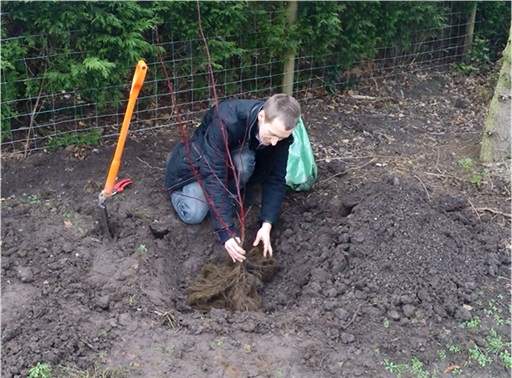
Dogwood (Cornus) are perfect for heavier clay soils that are prone to lying wet
Bare Root Trees
- Trees bring a great sense of atmosphere, height and permanence to any garden or landscape.
- They're probably one of the most expensive things you'll buy for your garden in the plants department.
- The great advantage of bare root trees is that you'll get more roots (and therefore more tree) for your money.
- Trees available as bare root include Nordmann Fir (also the most popular type of 'no needle drop' Christmas tree in the UK), Scots pine, Willow, Elder and Mountain Ash.
- Winter is the ideal time to plant a bare root tree. Just remember to keep the bare roots well covered whilst you prepare the ground at they will dry out very quickly when exposed to the air.
- It's worth taking the time to get your tree planting right, get your tree off to the best start in life and be able to enjoy it for many years to come. Please see our step-by-step guide on how to plant a tree for more information.
- Shop for bare root trees
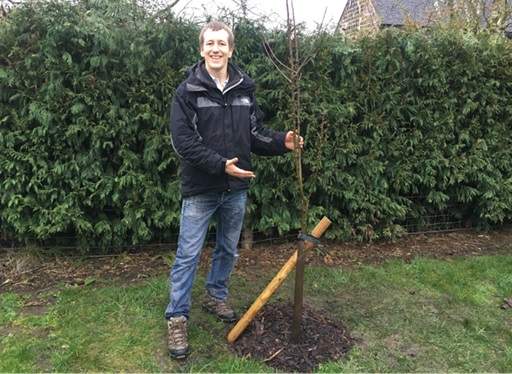
Trees bring a great sense of atmosphere, height and permanence to any garden
Bare Root Roses
- Roses are also naturally dormant during the winter months, meaning they too can be supplied as bare root.
- Bare root roses are easier to handle because, as most roses are deciduous, bare root specimens will not be in leaf. This makes life easier for gardeners as their sharp thorns are more visible and easily avoided.
- They will establish quickly and, unlikely other plants, will flower in their first year.
- Most bare root roses are field grown in a traditional way that has been unchanged for generations. Roses 'in variety' are grafted onto a root stock by professional rose 'budders' and typically have around 2 years of growing time from planting to lifting from the field.
- Whilst a wider variety of potted roses are available all year round, we have a smaller selection of bare root roses including dog rose and hedgerow rose.
- Shop for bare root roses
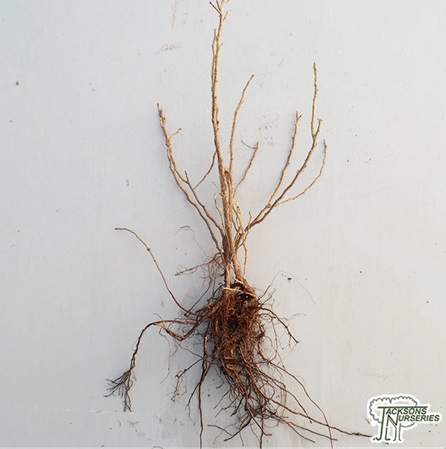
Bare root Rosa Rugosa with healthy, extensive root system
Bare Root Perennials
- Perennials are the mainstay of the flower garden, great for adding colour and texture each summer.
- They survive frost and live in the ground for more than 2 years, as opposed to annuals and biennials which last for one and two years respectively. They're distinct from shrubs and trees as they have no woody growth.
- Herbaceous perennials are those perennials which, depending on the local climate, may bloom over the spring and summer, die back in the autumn and winter then re-grow from their root-stock in the spring.
- Many perennials can be purchased economically as bare root rhizomes. It's an efficient way to grow agapanthus, Astilbe, hardy geraniums, Helenium and peonies in particular.
- When you receive your bare root perennials, soak them in a bucket of cold water for 2 hours. Like all bare root plants, they're best planted straight away providing the ground is not frozen or waterlogged. If the conditions are not suitable, plant them within a few days or pot them up over the winter ready for planting out in the spring.
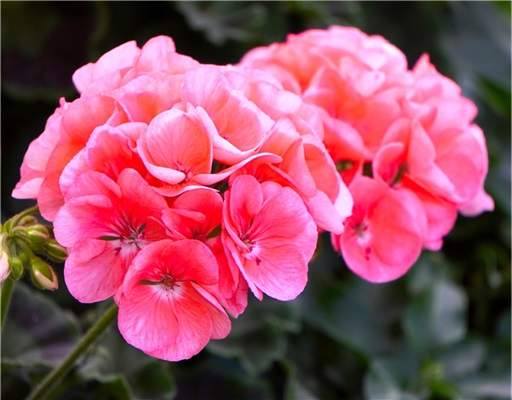
Bare root is an efficient way to grow hard geraniums
Bare Root Fruit Bushes and Canes
- Fruit bushes are a great way to add a productive quality to your ornamentals and enliven your garden borders with an abundant mix of flowers, fruits and, often, stunning autumn foliage colours.
- Consider building soft fruit bushes, canes and vines into your planting schemes to add a different twist to borders, attract wildlife to the garden and of course provide a supply of rich, succulent, juicy fruits that taste better than anything you will find on the supermarket shelves.
- There is nothing more satisfying than growing your own fruit and then eating it straight from the garden. You can produce a bountiful crop even in the smallest of town gardens. We recommend planting a number of different types and varieties of fruit so you have something to pick throughout the harvesting season.
- We currently supply fruit bushes in containers only, which can be planted at any time of the year.
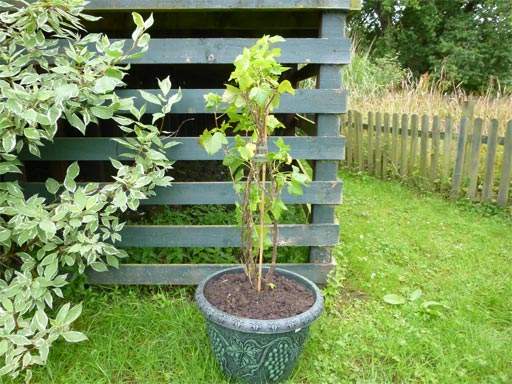
Soft fruit can also work well grown in a container on the patio
Bare Root Fruit Trees
- Fruit trees include pome fruits (apples and pears), stone fruits (peaches, nectarines, apricots, plums and cherries), as well as nut-bearing fruit trees such as walnuts and almonds are available as bare root plants.
- You don't need to have an orchard to enjoy home-grown fruit; a tree on a dwarf root stock or training your trees into space-saving forms such as espaliers, cordons and fans, they can be perfect for smaller gardens too.
- We're convinced that once you've bitten into your first home-grown Cox's Orange apple, devoured a handful of Stella cherries straight off the tree, relished the exquisite flavour of your own Moorpark apricot or even polished off the last semi-dried organic fig dunked in dark chocolate as a rustic al fresco dessert, you'll never look back!
- See our guide to fruit trees for more information on choosing a fruit trees, different forms, rootstocks, pollination groups, planting advice, pruning, feeding, storage and pesky pests and diseases you'll want to avoid.
- We currently supply fruit trees in containers only, which can be planted at any time of the year.
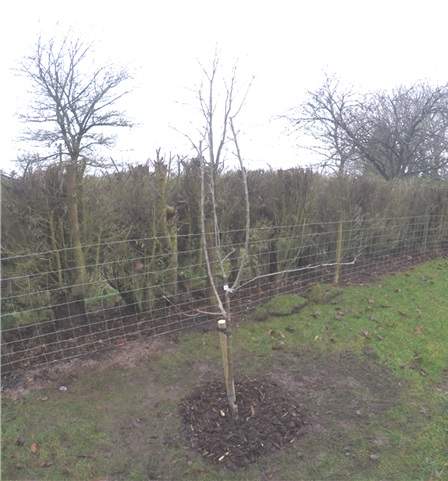
Bare root fruit tree, planted and staked
Deciduous vs. Evergreen Bare Root Plants
It's worth bearing in mind that deciduous bare root plants will not have any leaves at the time they are supplied (November to March). For this reason, the top growth above ground will look a bite bare and twiggy to start with. However, with the roots in direct contact with the soil once planted, they will establish quickly below ground during the winter, ready to fuel a stunning display of flowers and foliage come the spring. Some evergreens, particularly larger plants, are supplied root balled with the soil dug up around the roots and secured with burlap.
At Jackson's Nurseries, we supply a wide range of bare root plants at competitive prices for delivery to anywhere in the UK. Visit our bare root plants page to see our full selection.
Share this page:

